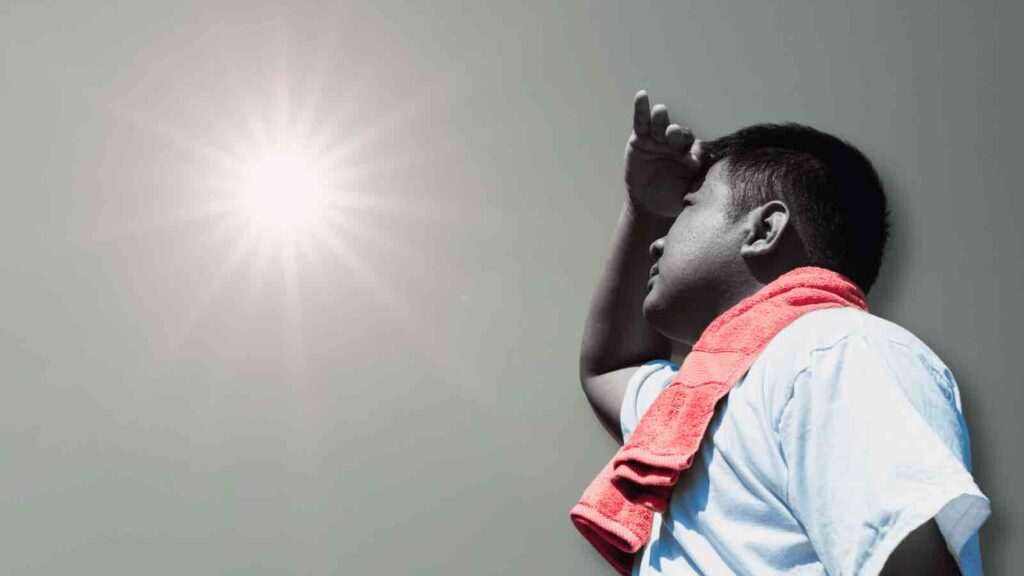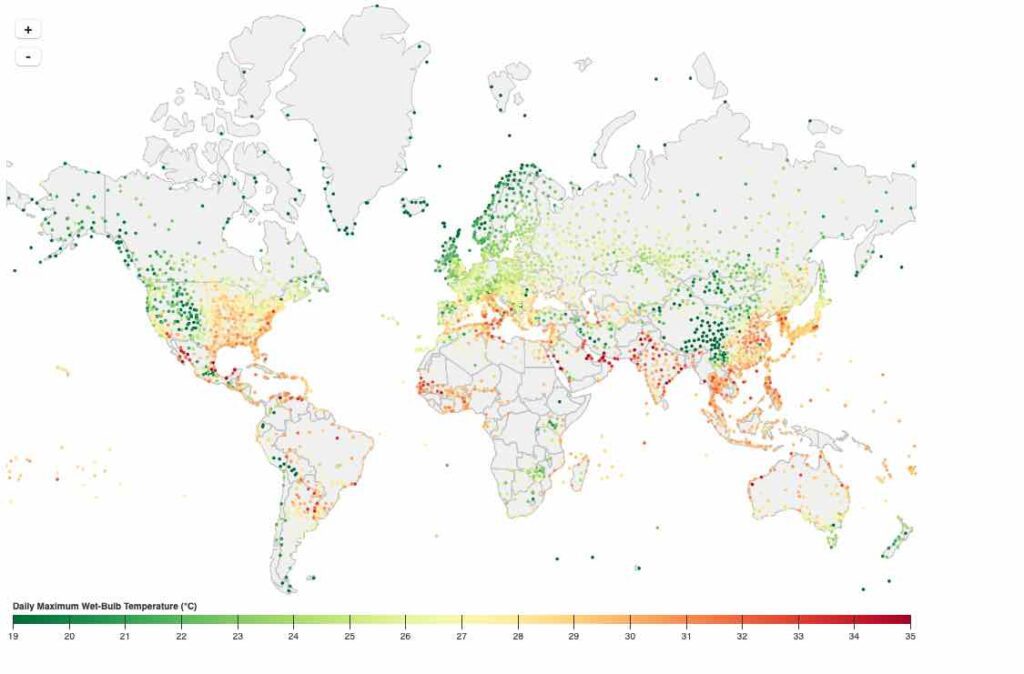Lethal humidity. Normally your sweat cools you down. But if it’s too humid, your sweat can’t evaporate. Your body heat can’t escape. Your core temperature starts to rise, which can be fatal.
Escalating levels of heat and humidity are besieging global ‘hot spots’ at a pace that was unforeseen. But how likely is it for global temperatures to cap at a 1.5°C increase? The odds are a dismal 1 in 50, surprisingly more uncertain than a game of roulette. Yet, the real crux lies elsewhere.
RELEVANT SUSTAINABLE GOALS
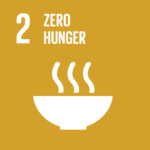
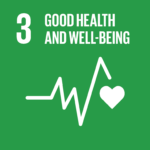

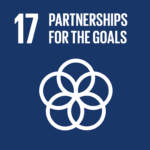
Lethal levels of heat and humidity are gripping global ‘hot spots’ sooner than expected
The looming crisis overshadows even the ravages of COVID. While the fossil fuel industry doesn’t deny the upward trajectory of global temperatures, it’s conspicuously silent about another alarming trend: the rapid surge of lethal humidity. And it’s not just statistics; it’s about lives – possibly yours.
If you believe urban life shields you from nature’s fury, think again. Modern conveniences like air conditioning might offer temporary solace, but they’re not foolproof. For those who spend their days outdoors, especially the young, the threat multiplies. Vulnerable populations, including children, the elderly, and the sick, face exacerbated risks. The silent killer? Overwhelming humidity levels.
Humidity-induced illnesses
Symptoms of humidity-induced illnesses are brutal: accelerated heart rates, excruciating headaches, and frequent bouts of vomiting. A person’s blood circulation might escalate to a staggering 400% of its normal rate, rapidly pushing body temperature towards a perilous 41°C. What follows is the physiological equivalent of cascading dominos – cellular structures deteriorate, internal bleeding ensues, blood coagulates, and organ failure becomes inevitable.
Sweating helps cool us down, especially when the sweat evaporates off our skin. But if the air is super humid (like when humidity is 70% or more), the sweat doesn’t evaporate. Instead, we just feel extra hot and sticky.
When this happens, our body tries other ways to cool down. You might find yourself breathing faster or feeling warmer. Your heart sends more blood to your hands and feet, and less to your insides and brain. This can make you feel slow, tired, and even a bit dizzy. Your leg muscles might cramp up too. Losing too much fluid and salt from sweating without replacing them can make your body too hot. If it gets too extreme, you might get heat exhaustion or even heat stroke, which can be really dangerous
Global Food Supplies, Stampede migration, survival behaviours, and border collapse
This peril isn’t geographically isolated. The world’s major food suppliers – China, India, and the USA – are in the crosshairs. West Africa, South America, all of Asia, Australia, Central Europe, and the Middle East are also not spared. The ramifications? A cascade of mass migrations, survivalist behaviors, and collapsing borders.
Recent tragedies like the searing heat of Ballia, India in June 2023, Xinjiang, China’s scorching 52.2°C in July 2023, Zhouzhou, China’s floods in August 2023, and the menacing humidity levels in Buan, South Korea in August 2023 are but ominous harbingers.
Interactive Map : Humidity and Heat Are Emerging Across the Globe
In a groundbreaking study, experts have illustrated the real-time emergence of these life-threatening combinations of heat and humidity across the globe. An interactive map, color-graded from yellow to red, highlights the worst-hit areas using the Centigrade “wet bulb” scale. This tangible representation of our planet’s fever offers a chilling reminder of the road ahead.
Looking at weather data from 1979 to 2017, the researchers noticed that extremely hot and humid days doubled. These scorching conditions showed up often in places like India, Bangladesh, Pakistan, Australia, the Red Sea coast, and around Mexico’s Gulf of California. Some cities in Saudi Arabia, Qatar, and the United Arab Emirates – which are home to over 3 million people – faced the deadliest of these conditions 14 times. Southeast Asia, southern China, parts of Africa, and the Caribbean felt it too. In the US, areas near the Gulf Coast experienced these conditions many times, especially in cities like New Orleans and Biloxi, Mississippi. Even places further inland like Arkansas felt the heat.
Overall, experts warn of a looming, tangible threat: widespread exposure to extreme heat could affect hundreds of millions before they adequately adapt to fend off the associated increase in deaths and illnesses. Even if protective health measures are implemented, the severe heat stress would inhibit many from working or even venturing outdoors. ‘The repercussions extend beyond the fatal,’ one expert noted. ‘The significant toll on quality of life cannot be overlooked.
You may also be interested in :
UN Raises The Alarm : Heightened Heatwave Threat Calls For Global Climate Resilience


